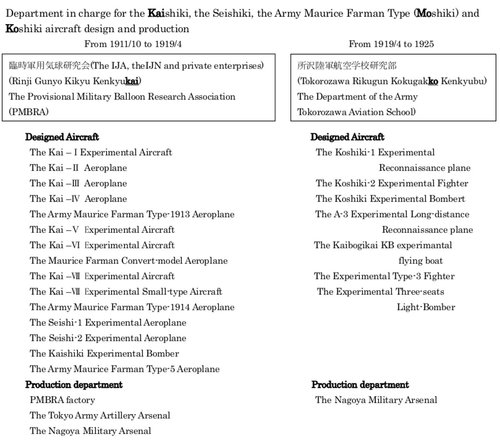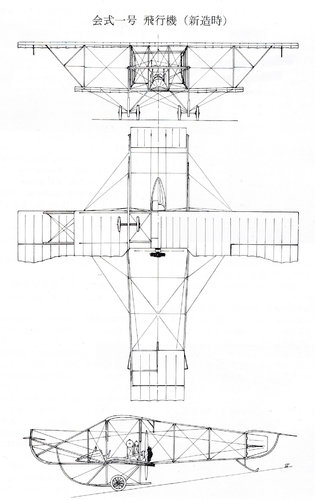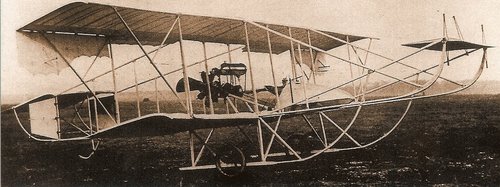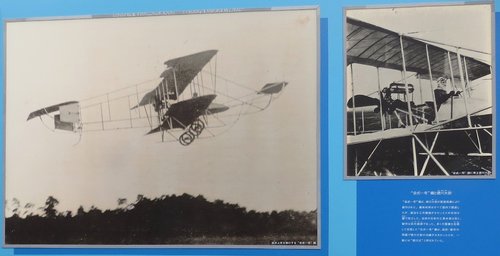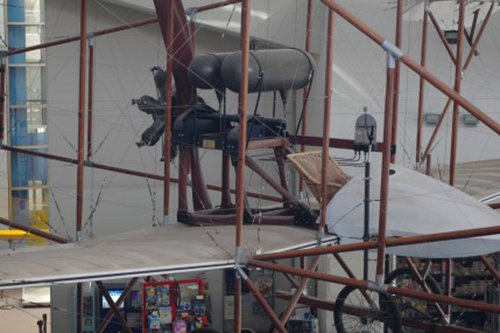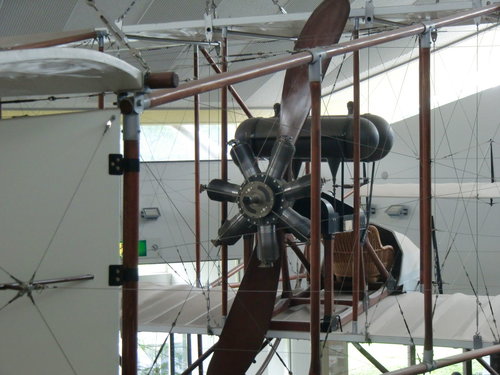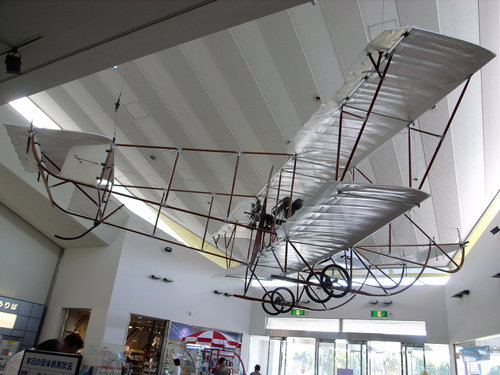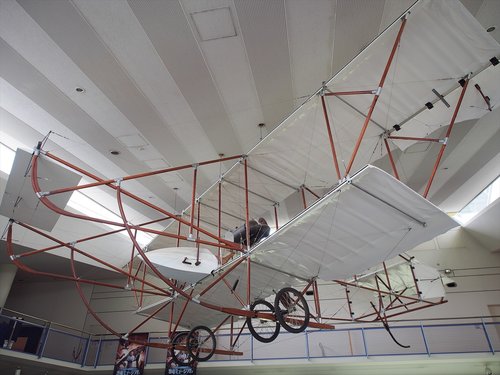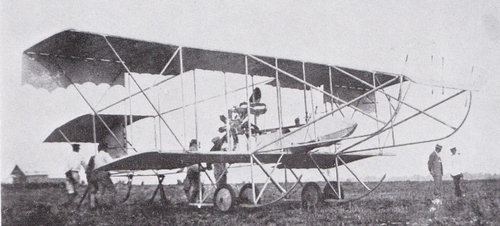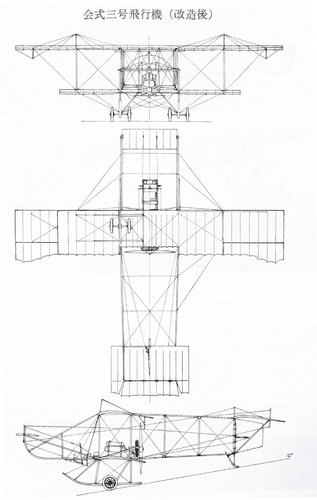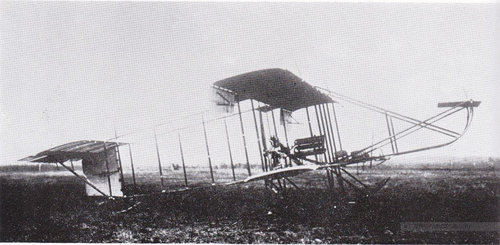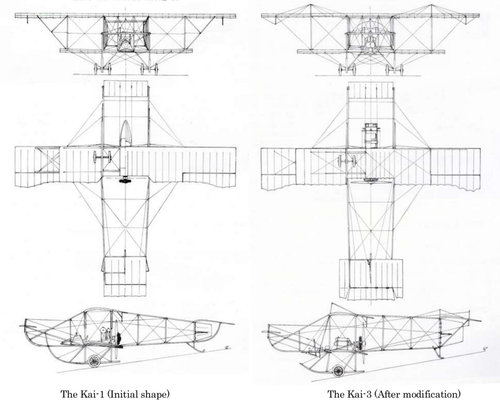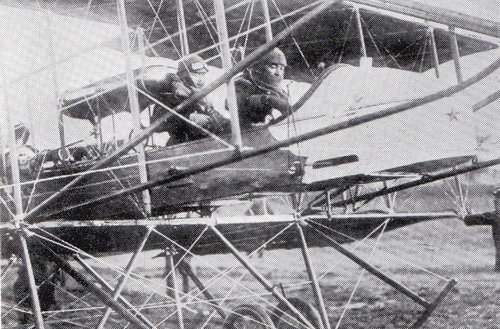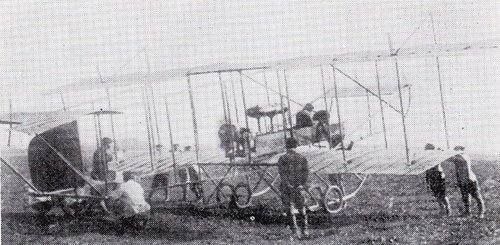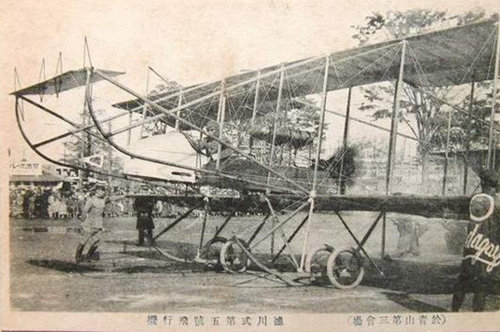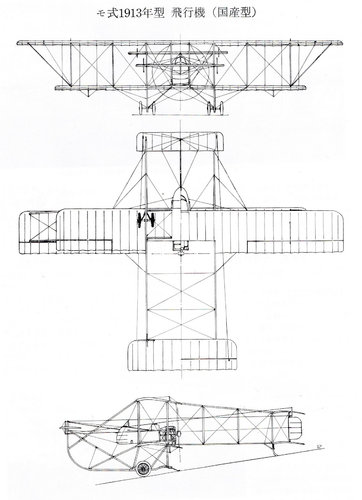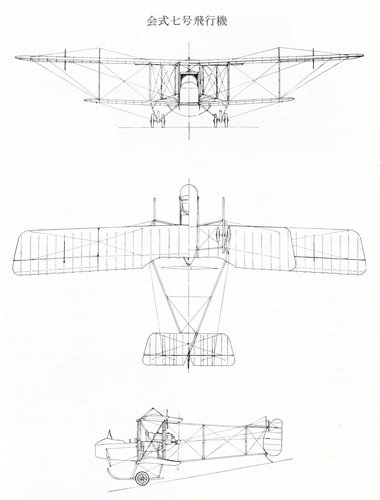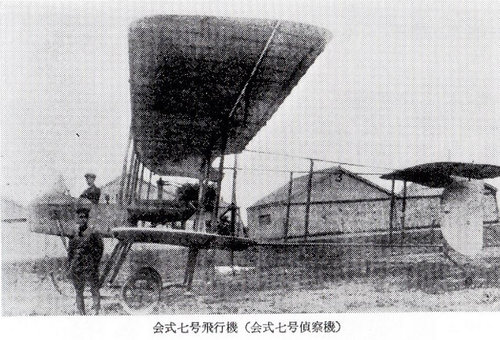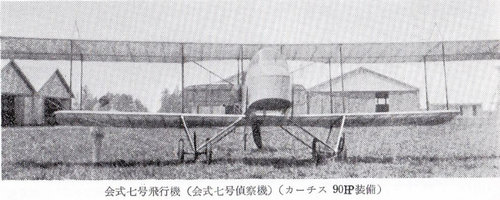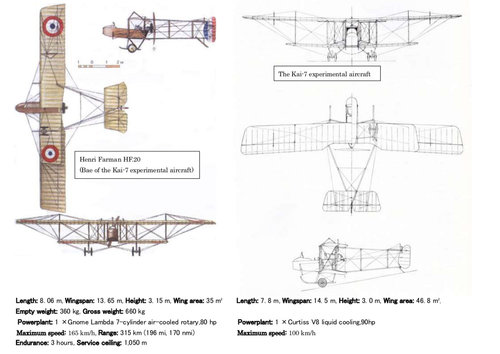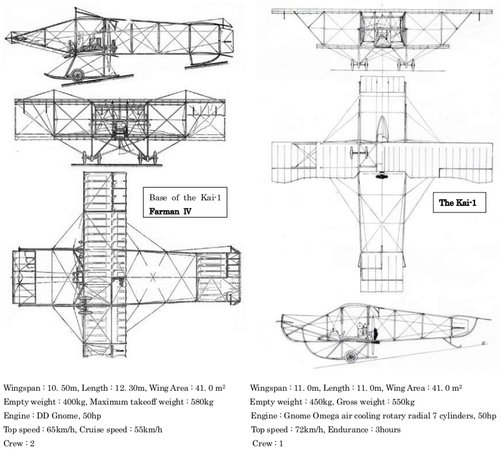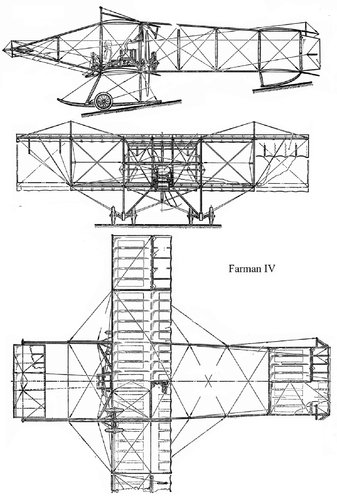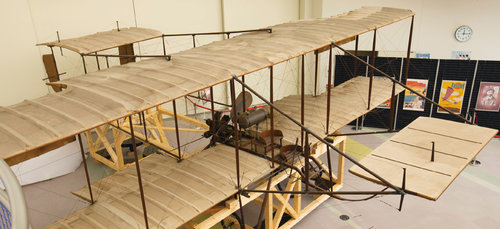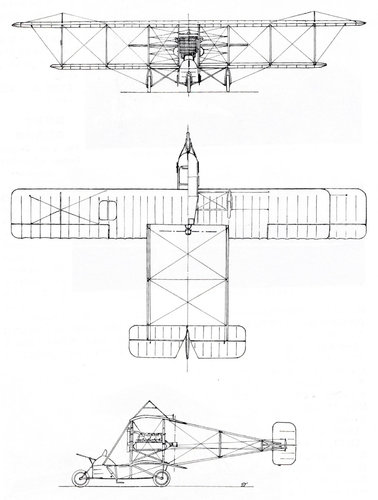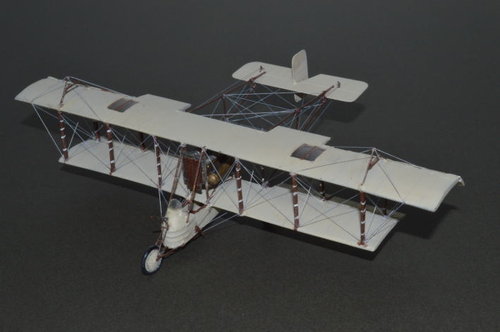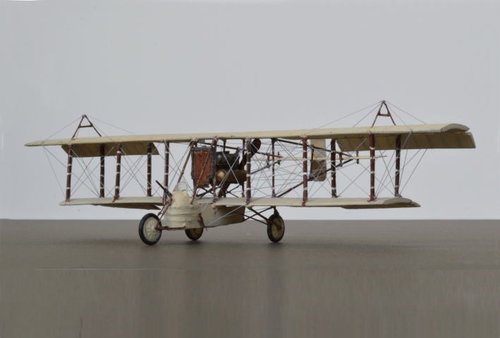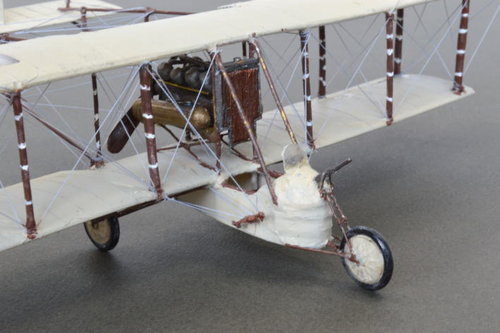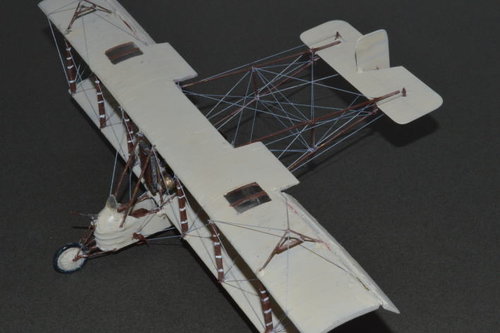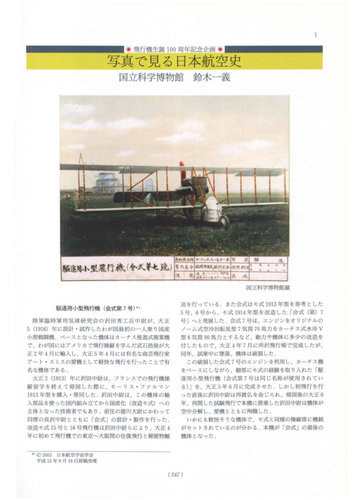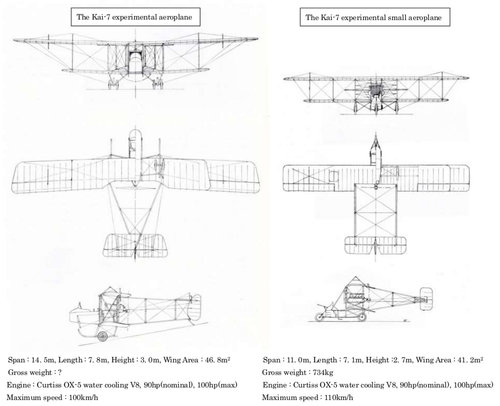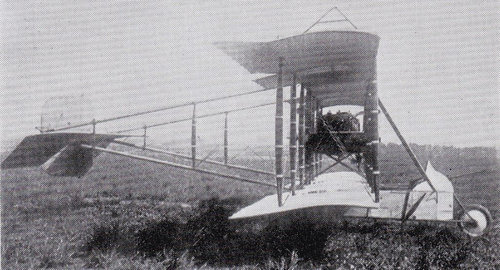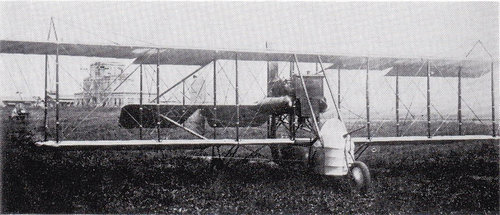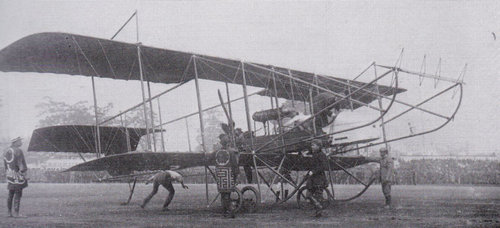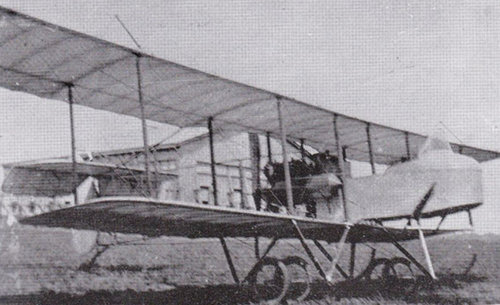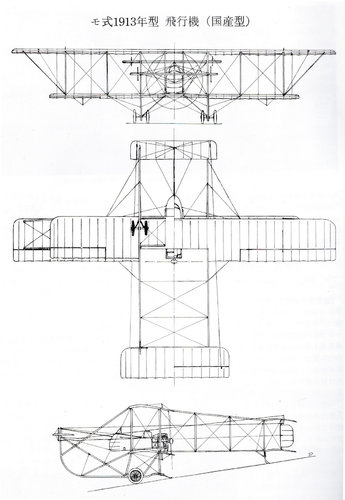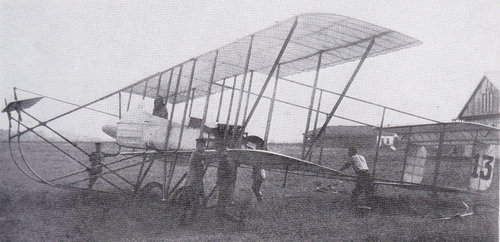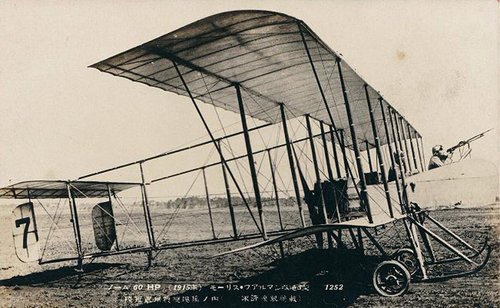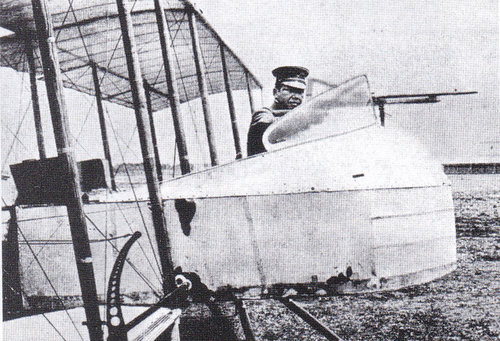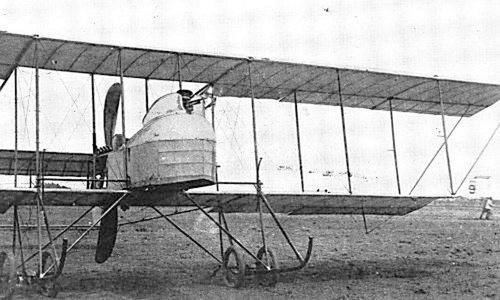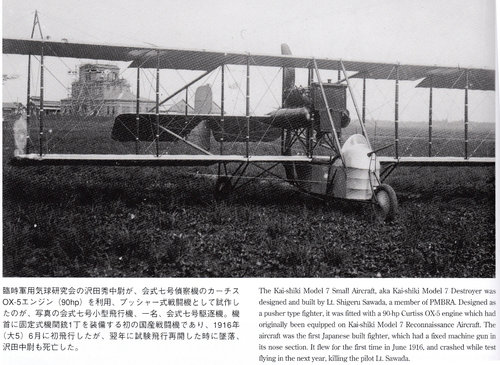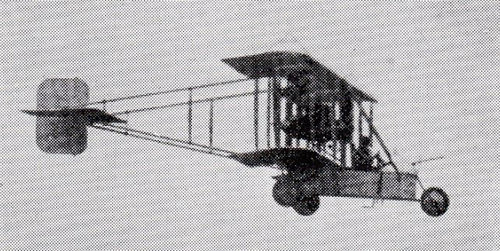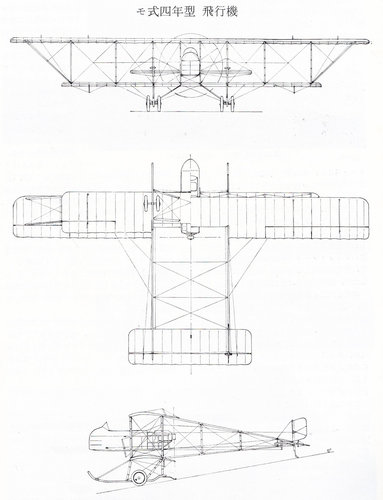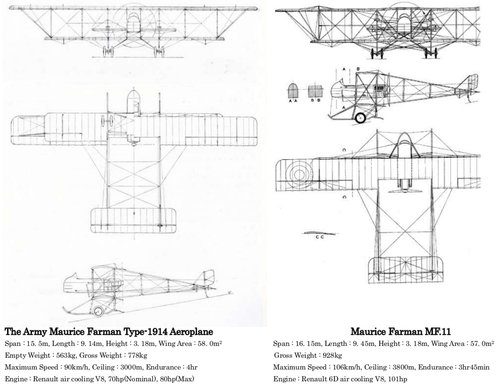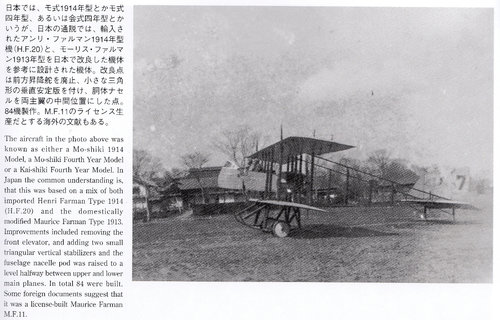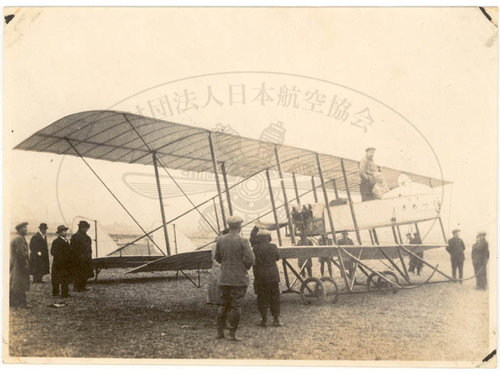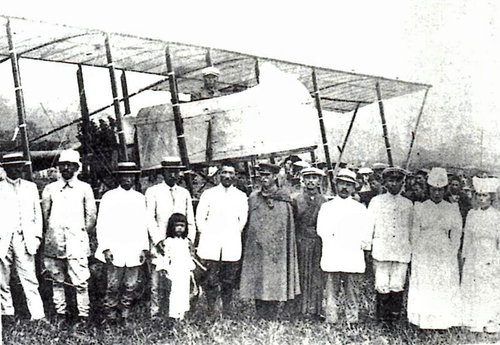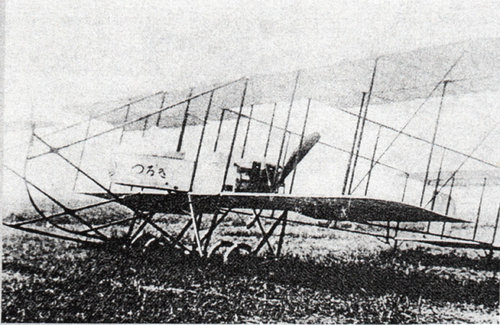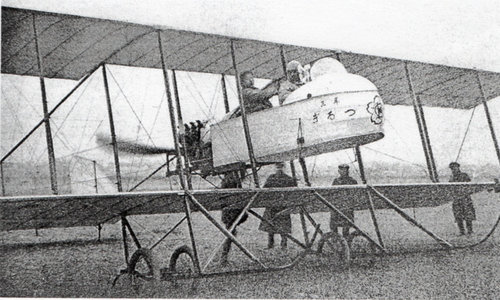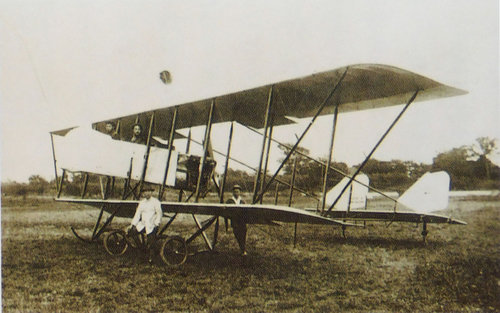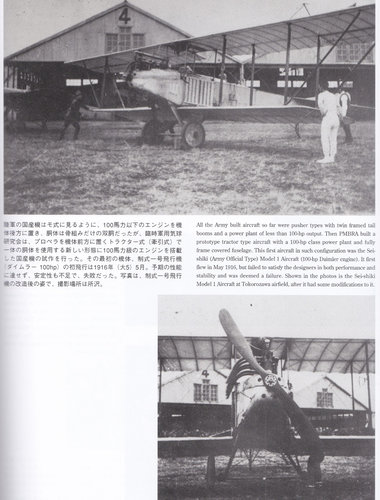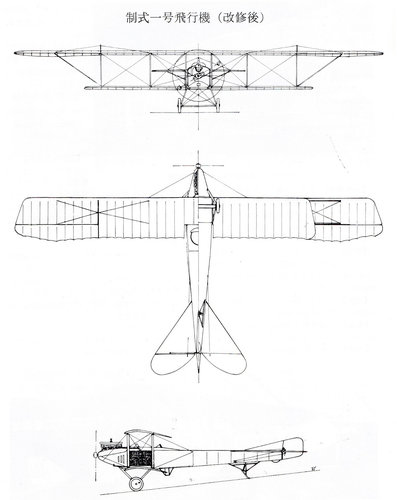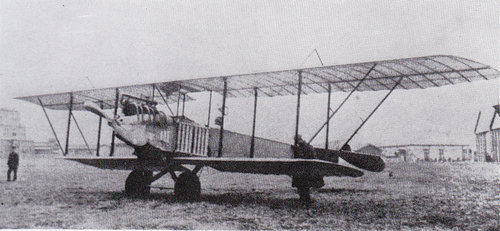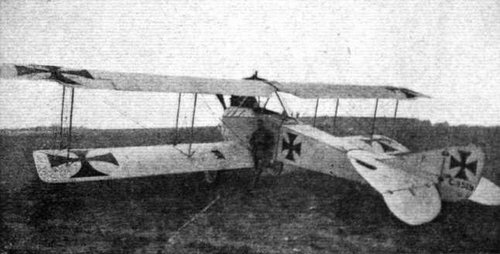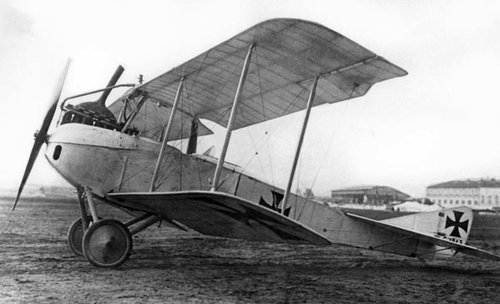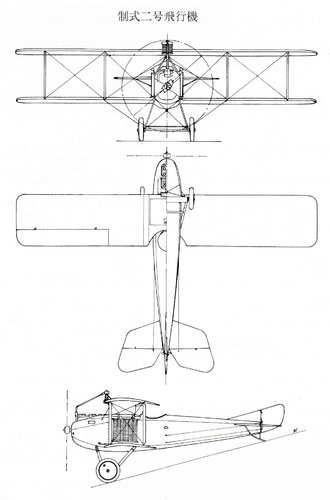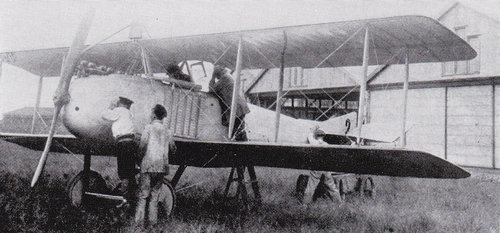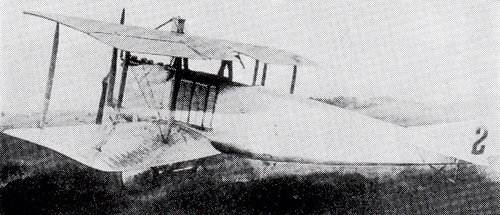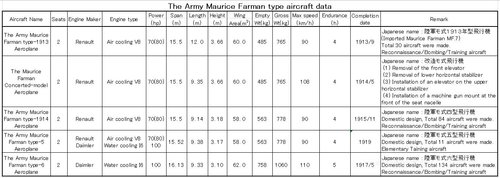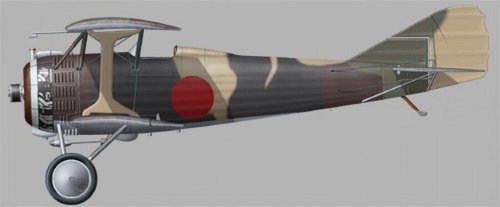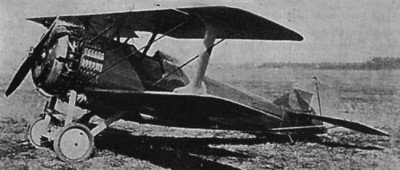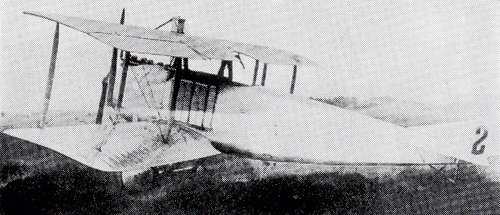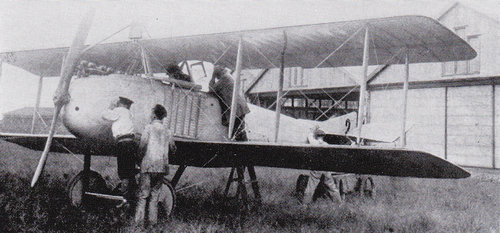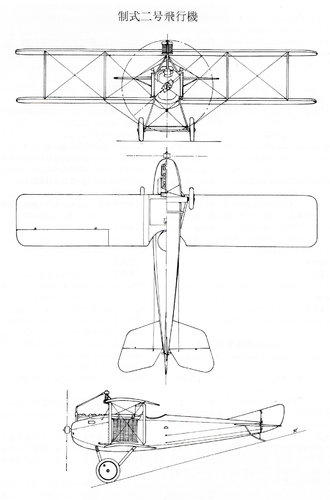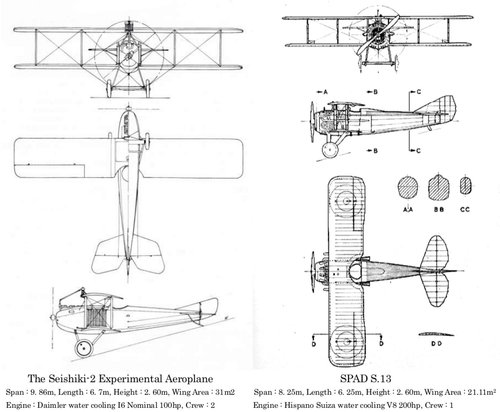You are using an out of date browser. It may not display this or other websites correctly.
You should upgrade or use an alternative browser.
You should upgrade or use an alternative browser.
The IJA Kai-shiki, Mo-shiki, Sei-shiki and Ko-shiki aircraft
- Thread starter blackkite
- Start date
blackkite
Don't laugh, don't cry, don't even curse, but.....
- Joined
- 31 May 2007
- Messages
- 8,286
- Reaction score
- 5,852
Hi! The Kai-1 Experimental Aeroplane.
Engine : Gnome Air cooling radial 7 cylinders 50hp
Span : 11.0m, Length : 11.0m, Empty weight : 450kg, Gross weight : 550kg, Maximum speed : 72km/h, Endurance : 3hours
Engine : Gnome Air cooling radial 7 cylinders 50hp
Span : 11.0m, Length : 11.0m, Empty weight : 450kg, Gross weight : 550kg, Maximum speed : 72km/h, Endurance : 3hours
Attachments
Last edited:
blackkite
Don't laugh, don't cry, don't even curse, but.....
- Joined
- 31 May 2007
- Messages
- 8,286
- Reaction score
- 5,852
blackkite
Don't laugh, don't cry, don't even curse, but.....
- Joined
- 31 May 2007
- Messages
- 8,286
- Reaction score
- 5,852
The Kai-1Experimental Aircraft is said to be the first domestically produced Japanese military aircraft. Today, the actual machine does not exist, and a full-scale replica is hung and displayed on the ceiling of the entrance lobby of the Tokorozawa Aviation Memorial Hall.
This aircraft was designed with reference to the French-made 1910 Henry Farman biplane, which has the official record of Japan's first flight, but Captain Tokugawa changed the shape and area of the wing cross section and made each part streamlined and aired. Several changes were made, such as a reduction in resistance, to improve the strength of the aircraft and the climbing force/speed. All materials were procured domestically, but the industrial level in Japan at that time was still low and there was no sufficient processing equipment, so production was mainly done by hand with a saw.
Production of this aircraft started in July 1911 inside the hangar at Tokorozawa Airfield, completed in early October, and on October 13th, a test flight was conducted by the captain Tokugawa's own control, at an altitude of 50 m and a speed of 72 km/h. , (Maximum altitude is 85m) and recorded good performance, and maneuverability was also highly evaluated as compared to the Farman aircraft.
Since the achievement of Captain Tokugawa from the design and production stage was great, it was generally called "Tokugawa type" at that time, and after that, it was mainly used for training such as pilot training and education of aerial reconnaissance.
This aircraft was designed with reference to the French-made 1910 Henry Farman biplane, which has the official record of Japan's first flight, but Captain Tokugawa changed the shape and area of the wing cross section and made each part streamlined and aired. Several changes were made, such as a reduction in resistance, to improve the strength of the aircraft and the climbing force/speed. All materials were procured domestically, but the industrial level in Japan at that time was still low and there was no sufficient processing equipment, so production was mainly done by hand with a saw.
Production of this aircraft started in July 1911 inside the hangar at Tokorozawa Airfield, completed in early October, and on October 13th, a test flight was conducted by the captain Tokugawa's own control, at an altitude of 50 m and a speed of 72 km/h. , (Maximum altitude is 85m) and recorded good performance, and maneuverability was also highly evaluated as compared to the Farman aircraft.
Since the achievement of Captain Tokugawa from the design and production stage was great, it was generally called "Tokugawa type" at that time, and after that, it was mainly used for training such as pilot training and education of aerial reconnaissance.
Last edited:
blackkite
Don't laugh, don't cry, don't even curse, but.....
- Joined
- 31 May 2007
- Messages
- 8,286
- Reaction score
- 5,852
blackkite
Don't laugh, don't cry, don't even curse, but.....
- Joined
- 31 May 2007
- Messages
- 8,286
- Reaction score
- 5,852
Hi! Modified Kai-1 Aeroplane.
At the beginning of the first flight, the first aircraft was a one-seater , but in the following 1912 , the rear seat was added as well as the Farman aircraft, and it was remodeled to accommodate two. During this modification, design changes were made to the main wing, tail, and landing gear, and the modified aircraft was designated as "Modified Kai-1" sometimes.
At the beginning of the first flight, the first aircraft was a one-seater , but in the following 1912 , the rear seat was added as well as the Farman aircraft, and it was remodeled to accommodate two. During this modification, design changes were made to the main wing, tail, and landing gear, and the modified aircraft was designated as "Modified Kai-1" sometimes.
Attachments
blackkite
Don't laugh, don't cry, don't even curse, but.....
- Joined
- 31 May 2007
- Messages
- 8,286
- Reaction score
- 5,852
From the Kai-2 aircraft to the Kai-4 aircraft were improved by the Kai-1 aircraft, designed by Captain Tokugawa.
The Kai-2 was completed in March 1912, it was a homomorphic aircraft of the Kai-1, and the structure of the strut between wings was different from the the Kai-1.
On the 24th day of the 1912, Captain Tokugawa flew from Tokorozawa to Tokyo Yoyogi, which was the first Tokyo visit flight by the IJA aircraft.
The Kai-3 aircraft was completed as the same aircraft as the Kai-2 aircraft, but it was seriously damaged by a crash in Nerima village on June 21, 1913.
During the subsequent restoration, the engine was replaced from the Gnome engine since the Kai-1 aircraft engine to an Anzani rotary radial 6-cylinder engine (60 horsepower).
The Kai-4 aircraft completed in November 1912 had been equipped with Anzani engine from the beginning.
After the Kai-5 aircraft, the designer changed to Lieutenant Sawada, and the original design was made while referring to imported aircraft.
The last-produced the Kai-7 known as the "Kai-7 destroyer" designed by lieutenant Sawada, and it was the first domestic fighter plane in Japan.
After that, the production continued under the name "Seishiki (formal)" starting with the Seishiki-1 aircraft, but in the actual battle it was decided to adopt an imported aircraft, and the production was discontinued after the Seishiki -2 aircraft.
The Kai-2 was completed in March 1912, it was a homomorphic aircraft of the Kai-1, and the structure of the strut between wings was different from the the Kai-1.
On the 24th day of the 1912, Captain Tokugawa flew from Tokorozawa to Tokyo Yoyogi, which was the first Tokyo visit flight by the IJA aircraft.
The Kai-3 aircraft was completed as the same aircraft as the Kai-2 aircraft, but it was seriously damaged by a crash in Nerima village on June 21, 1913.
During the subsequent restoration, the engine was replaced from the Gnome engine since the Kai-1 aircraft engine to an Anzani rotary radial 6-cylinder engine (60 horsepower).
The Kai-4 aircraft completed in November 1912 had been equipped with Anzani engine from the beginning.
After the Kai-5 aircraft, the designer changed to Lieutenant Sawada, and the original design was made while referring to imported aircraft.
The last-produced the Kai-7 known as the "Kai-7 destroyer" designed by lieutenant Sawada, and it was the first domestic fighter plane in Japan.
After that, the production continued under the name "Seishiki (formal)" starting with the Seishiki-1 aircraft, but in the actual battle it was decided to adopt an imported aircraft, and the production was discontinued after the Seishiki -2 aircraft.
Last edited:
Dilandu
I'm dissatisfied, which means, I exist.
Very interesting insight on early Japanese aviation!
blackkite
Don't laugh, don't cry, don't even curse, but.....
- Joined
- 31 May 2007
- Messages
- 8,286
- Reaction score
- 5,852
blackkite
Don't laugh, don't cry, don't even curse, but.....
- Joined
- 31 May 2007
- Messages
- 8,286
- Reaction score
- 5,852
The Kai-5 and the Kai-6 experimental aircraft. I can't find three side view drawing of this aircraft.
The Kai-5 and the Kai-6 experimental aircraft were designed by Lieutenant Nagasawa and Lieutenant Sawada, and each was manufactured with the same design drawing. The wings were designed with reference to the Maurice Farman 1913 model aircraft imported by the Japanese Army. The engine of this airplane was 70 horsepower of Gnome, and was less reliable than the engine of Renault 70 horsepower equipped in the Maurice Farman 1913 model airplane. Since the Maurice Farman 1913 airplane had been put into practical use by the Japanese Army, production of the Kai-5 and the Kai-6 were not added. The pilot's seat of this airplane was set up in a long nacelle, which facilitated the reconnaissance mission.
Wing design of this aircraft was based on the Army Maurice-Farman Type 1913 Aeroplane. (Please check three side view drawing.)
Source : ENCYCLOPEDIA OF JAPANESE AIRCRAFT
The Kai-5 and the Kai-6 experimental aircraft were designed by Lieutenant Nagasawa and Lieutenant Sawada, and each was manufactured with the same design drawing. The wings were designed with reference to the Maurice Farman 1913 model aircraft imported by the Japanese Army. The engine of this airplane was 70 horsepower of Gnome, and was less reliable than the engine of Renault 70 horsepower equipped in the Maurice Farman 1913 model airplane. Since the Maurice Farman 1913 airplane had been put into practical use by the Japanese Army, production of the Kai-5 and the Kai-6 were not added. The pilot's seat of this airplane was set up in a long nacelle, which facilitated the reconnaissance mission.
Wing design of this aircraft was based on the Army Maurice-Farman Type 1913 Aeroplane. (Please check three side view drawing.)
Source : ENCYCLOPEDIA OF JAPANESE AIRCRAFT
Attachments
Last edited:
blackkite
Don't laugh, don't cry, don't even curse, but.....
- Joined
- 31 May 2007
- Messages
- 8,286
- Reaction score
- 5,852
Hi! The Kai-7 experimental aircraft.
In March 1913, Lieutenant Sawada independently modified the Henri Farman 1914 type airplane and completed the Kai-7 experimental aircraft in July 1914.
The engine was the Curtiss OX-5 water-cooled V 8 100hp, and the maximum speed was 100 km/h.
The number of production of this aircraft was one.
In March 1913, Lieutenant Sawada independently modified the Henri Farman 1914 type airplane and completed the Kai-7 experimental aircraft in July 1914.
The engine was the Curtiss OX-5 water-cooled V 8 100hp, and the maximum speed was 100 km/h.
The number of production of this aircraft was one.
Attachments
Last edited:
blackkite
Don't laugh, don't cry, don't even curse, but.....
- Joined
- 31 May 2007
- Messages
- 8,286
- Reaction score
- 5,852
blackkite
Don't laugh, don't cry, don't even curse, but.....
- Joined
- 31 May 2007
- Messages
- 8,286
- Reaction score
- 5,852
Hi!
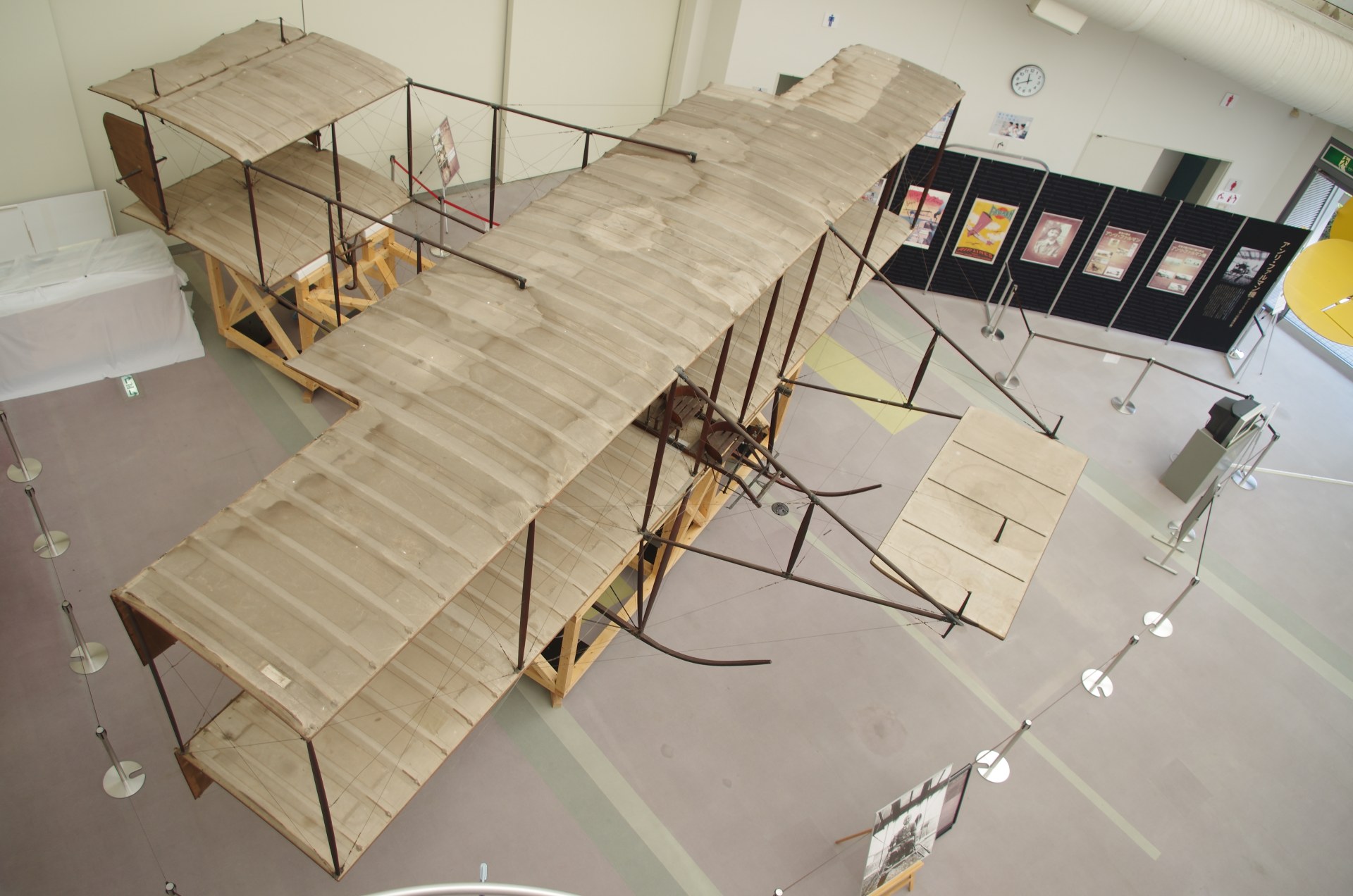
 senseki-kikou.net
senseki-kikou.net

「日本の航空事始め・その1」アンリ・ファルマン機と徳川好敏(所沢航空発祥記念館と代々木公園)
所沢航空発祥記念館に展示されている「アンリ・ファルマン機」。日本で初めての動力飛行を行った飛行機。徳川好敏とと…
blackkite
Don't laugh, don't cry, don't even curse, but.....
- Joined
- 31 May 2007
- Messages
- 8,286
- Reaction score
- 5,852
Hi! The Kai-7 experimental small-type aircraft.
Source : ENCYCLOPEDUA OF JAPANESE AIRCRAFT, etc
Source : ENCYCLOPEDUA OF JAPANESE AIRCRAFT, etc
Attachments
blackkite
Don't laugh, don't cry, don't even curse, but.....
- Joined
- 31 May 2007
- Messages
- 8,286
- Reaction score
- 5,852
Hi! Abstruct of this document.
The small aircraft for destroyer (the Kai-7 experimental small-type aircraft) was the first single-seat domestic small fighter in Japan designed and prototyped by Lieutenant Sawada in 1916. The aircraft that served as the basis of this airplane is a Curtiss-propulsion biplane, which was imported to Japan in April 1913 by Mr. Takeishi, who studied flight control in the United States.
In 1913, Lieutenant Sawada purchased and accompanied the Maurice Farman 1913 model when he returned to Japan after studying abroad for airplane flight in France. Lieutenant Sawada was also an engineer who mainly carried out assembly and domestic production (modified Maurice Farman model) of this airplane, and designed and produced the "Kai aircraft" with his colleague Lieutenant Nagasawa on behalf of his predecessor, Captain Tokugawa.
The Kai aircraft had evolved from the Kai-5 and the Kai-6, which were based on the Maurice Farman 1913 model, to the Kai-7 which was a modified 1914 model.
The Kai-7 experimental aircraft was applied modification of the power and fuselage, such as changing the engine from the original Gnome air-cooled rotary radial 7 cylinder 70 hp to Curtiss water cooled V8 90 hp. It was completed at Tokorozawa Airfield in July 1915, but in the same year it crashed during a test flight and the aircraft was damaged.
A small aircraft for destroyer (the same name “the Kai-7” was used ) that uses the damaged engine of the Kai-7 was based on a Curtiss aircraft, and incorporates the experience of the Maurice Farman type in details and completed in June 1916.
In a test flight in 1917, the aircraft disassembled in the air, and Lieutenant Sawada who boarded was martyred.
This airplane was a very light aircraft, and the machine gun was set in the cockpit like the Maurice Farman type. This was the last aircraft in the "Kai".
The small aircraft for destroyer (the Kai-7 experimental small-type aircraft) was the first single-seat domestic small fighter in Japan designed and prototyped by Lieutenant Sawada in 1916. The aircraft that served as the basis of this airplane is a Curtiss-propulsion biplane, which was imported to Japan in April 1913 by Mr. Takeishi, who studied flight control in the United States.
In 1913, Lieutenant Sawada purchased and accompanied the Maurice Farman 1913 model when he returned to Japan after studying abroad for airplane flight in France. Lieutenant Sawada was also an engineer who mainly carried out assembly and domestic production (modified Maurice Farman model) of this airplane, and designed and produced the "Kai aircraft" with his colleague Lieutenant Nagasawa on behalf of his predecessor, Captain Tokugawa.
The Kai aircraft had evolved from the Kai-5 and the Kai-6, which were based on the Maurice Farman 1913 model, to the Kai-7 which was a modified 1914 model.
The Kai-7 experimental aircraft was applied modification of the power and fuselage, such as changing the engine from the original Gnome air-cooled rotary radial 7 cylinder 70 hp to Curtiss water cooled V8 90 hp. It was completed at Tokorozawa Airfield in July 1915, but in the same year it crashed during a test flight and the aircraft was damaged.
A small aircraft for destroyer (the same name “the Kai-7” was used ) that uses the damaged engine of the Kai-7 was based on a Curtiss aircraft, and incorporates the experience of the Maurice Farman type in details and completed in June 1916.
In a test flight in 1917, the aircraft disassembled in the air, and Lieutenant Sawada who boarded was martyred.
This airplane was a very light aircraft, and the machine gun was set in the cockpit like the Maurice Farman type. This was the last aircraft in the "Kai".
Attachments
blackkite
Don't laugh, don't cry, don't even curse, but.....
- Joined
- 31 May 2007
- Messages
- 8,286
- Reaction score
- 5,852
snark
But Dad, don't we EAT the antelopes?
- Joined
- 2 December 2007
- Messages
- 107
- Reaction score
- 76
Blackkite-sanHi! I made a Kai aircraft list.
Thanks so much for your work. Regards, Harry
blackkite
Don't laugh, don't cry, don't even curse, but.....
- Joined
- 31 May 2007
- Messages
- 8,286
- Reaction score
- 5,852
Hi! The Army Maurice Farman Type-1913 Aeroplane.
By the summer of 1913, the Japanese Imperial Army completed the assembly of four imported Maurice Farman 1913 airplanes (MF.7) in Tokorozawa. In addition, domestic production of this aircraft was promoted, and it became the first production aircraft of the Japanese Imperial Army. This airplane was superior in stability and maneuverability to the Kai-1 to the Kai-4, and the Renault 70-horsepower engine was well received with few failures. Four of the planes participated in the Battle of Tsingtao that was held from September to October 1914, and were active in reconnaissance and bombing. There were 30 aircraft built.
Source : ENCYCLOPERIA OF JAPANESE AIRCRAFT.
By the summer of 1913, the Japanese Imperial Army completed the assembly of four imported Maurice Farman 1913 airplanes (MF.7) in Tokorozawa. In addition, domestic production of this aircraft was promoted, and it became the first production aircraft of the Japanese Imperial Army. This airplane was superior in stability and maneuverability to the Kai-1 to the Kai-4, and the Renault 70-horsepower engine was well received with few failures. Four of the planes participated in the Battle of Tsingtao that was held from September to October 1914, and were active in reconnaissance and bombing. There were 30 aircraft built.
Source : ENCYCLOPERIA OF JAPANESE AIRCRAFT.
Attachments
blackkite
Don't laugh, don't cry, don't even curse, but.....
- Joined
- 31 May 2007
- Messages
- 8,286
- Reaction score
- 5,852
Hi! Maurice Farman MF.7 model.
https://modelingmadness.com/review/w1/fr/fosmf7.htm
https://modelingmadness.com/review/w1/fr/fosmf7.htm
blackkite
Don't laugh, don't cry, don't even curse, but.....
- Joined
- 31 May 2007
- Messages
- 8,286
- Reaction score
- 5,852
Hi! The Maurice Farman converted type aeroplane.
In 1914, Lieutenant Sawada embarked on a remodeling of the Maurice Farman 1913 model. The purpose of the remodeling was as follows.
(1) Improvement of reconnaissance and aerial shooting ability
(2) Improvement of stability and motility
(3) Speeding up
The details of the remodeling are as follows, and the remodeling was completed on January 19, 1915.
(1) Removal of the front elevator
(2) Removal of lower horizontal stabilizer
(3) Installation of an elevator on the upper horizontal stabilizer
(4) Installation of a machine gun mount at the front of the seat nacelle
With this modification, the shape of the aircraft was refined, and it was expected that it could be used for aerial combat. The plane crashed on May 26, 1915, and production ended with one prototype.
Crew : 2, Engine : Renault air cooling V8 70hp, Propeller diameter : 2. 9m,
Span : 15. 5m, Length : 9. 35m, Wing area : 60 square meter,
Empty weight : 485kg, Gross weight : 765kg, Maximum speed : 108km/h, Endurance : 4hours
In 1914, Lieutenant Sawada embarked on a remodeling of the Maurice Farman 1913 model. The purpose of the remodeling was as follows.
(1) Improvement of reconnaissance and aerial shooting ability
(2) Improvement of stability and motility
(3) Speeding up
The details of the remodeling are as follows, and the remodeling was completed on January 19, 1915.
(1) Removal of the front elevator
(2) Removal of lower horizontal stabilizer
(3) Installation of an elevator on the upper horizontal stabilizer
(4) Installation of a machine gun mount at the front of the seat nacelle
With this modification, the shape of the aircraft was refined, and it was expected that it could be used for aerial combat. The plane crashed on May 26, 1915, and production ended with one prototype.
Crew : 2, Engine : Renault air cooling V8 70hp, Propeller diameter : 2. 9m,
Span : 15. 5m, Length : 9. 35m, Wing area : 60 square meter,
Empty weight : 485kg, Gross weight : 765kg, Maximum speed : 108km/h, Endurance : 4hours
Attachments
Last edited:
blackkite
Don't laugh, don't cry, don't even curse, but.....
- Joined
- 31 May 2007
- Messages
- 8,286
- Reaction score
- 5,852
Hi! The Kai-7 experimental small-type aircraft another picture.
Source : Baron Miyahara and his World of Aircraft Military and Civil Aircraft 1910-1970
ENCYCLOPEDIA OF JAPANESE AIRCRAFT
Source : Baron Miyahara and his World of Aircraft Military and Civil Aircraft 1910-1970
ENCYCLOPEDIA OF JAPANESE AIRCRAFT
Attachments
Last edited:
blackkite
Don't laugh, don't cry, don't even curse, but.....
- Joined
- 31 May 2007
- Messages
- 8,286
- Reaction score
- 5,852
Hi! The Army Maurice Farman Type 1914 Aeroplane.
This airplane was a domestic design, but the shape looks like Maurice Farman MF.11.
This airplane was a domestic design, but the shape looks like Maurice Farman MF.11.
Attachments
blackkite
Don't laugh, don't cry, don't even curse, but.....
- Joined
- 31 May 2007
- Messages
- 8,286
- Reaction score
- 5,852
Hi! The Army Maurice Farman Type 1914 Aeroplane civil use production plane, Dai san Tsurugi go(第3つるぎ号).
Attachments
blackkite
Don't laugh, don't cry, don't even curse, but.....
- Joined
- 31 May 2007
- Messages
- 8,286
- Reaction score
- 5,852
Hi! The Army Maurice Farman Type-6 Aeroplane.
This aeroplane had almost same shape of the army Maurice Farman type-1914 aircraft,
but the engine was Daimler Benz instead of Renault air cooling engine.
This plane was the first reconnaissance / training aircraft developed by the Imperial Japanese Army and produced more than 100 aircraft. In August 1018, four aircraft were dispatched to Siberia and North Manchuria, but the cooling water froze and they could not play an active role.
You can see the radiator at the side of the fuselage.
https://ocoze.net/pulamo/06mechanism/engine-2/liquid-cooled-engine/daimler_mercedes/mercedes engine.html
This aeroplane had almost same shape of the army Maurice Farman type-1914 aircraft,
but the engine was Daimler Benz instead of Renault air cooling engine.
This plane was the first reconnaissance / training aircraft developed by the Imperial Japanese Army and produced more than 100 aircraft. In August 1018, four aircraft were dispatched to Siberia and North Manchuria, but the cooling water froze and they could not play an active role.
You can see the radiator at the side of the fuselage.
https://ocoze.net/pulamo/06mechanism/engine-2/liquid-cooled-engine/daimler_mercedes/mercedes engine.html
Attachments
-
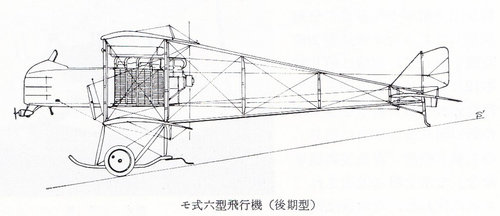 The Army Maurice Farman Type-6 Aeroplane side view.jpg122.5 KB · Views: 23
The Army Maurice Farman Type-6 Aeroplane side view.jpg122.5 KB · Views: 23 -
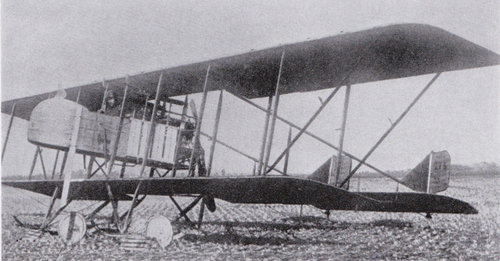 The Army Maurice Farman Type-6 Aeroplane pic1.jpg344 KB · Views: 22
The Army Maurice Farman Type-6 Aeroplane pic1.jpg344 KB · Views: 22 -
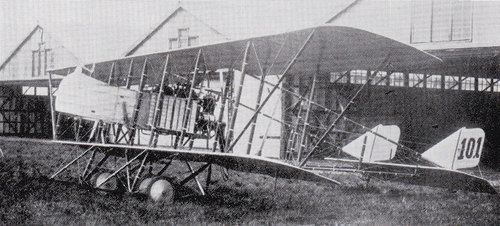 The Army Maurice Farman Type-6 Aeroplane pic2.jpg1.2 MB · Views: 21
The Army Maurice Farman Type-6 Aeroplane pic2.jpg1.2 MB · Views: 21 -
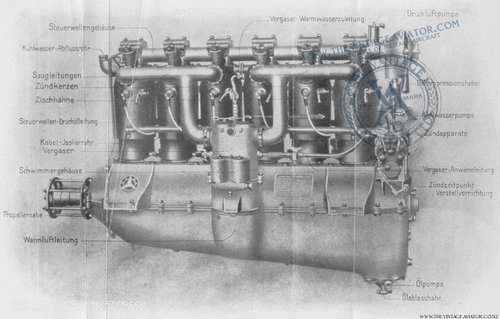 Mersedes DⅠ.jpg206.5 KB · Views: 21
Mersedes DⅠ.jpg206.5 KB · Views: 21 -
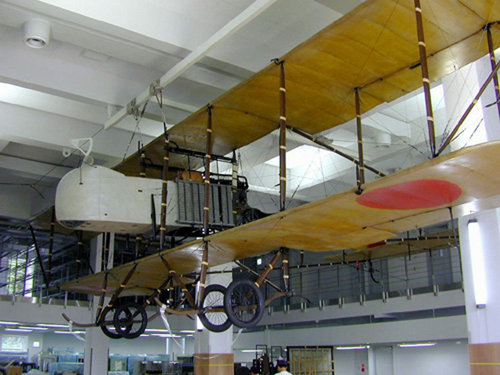 The Army Maurice Farman Type-6 Aeroplane.jpg264.2 KB · Views: 23
The Army Maurice Farman Type-6 Aeroplane.jpg264.2 KB · Views: 23 -
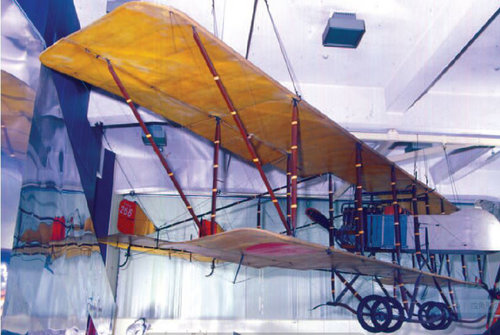 The Army Maurice Farman Type-6 Aeroplane pic4.JPG235.4 KB · Views: 34
The Army Maurice Farman Type-6 Aeroplane pic4.JPG235.4 KB · Views: 34
Last edited:
blackkite
Don't laugh, don't cry, don't even curse, but.....
- Joined
- 31 May 2007
- Messages
- 8,286
- Reaction score
- 5,852
Hi! The Seishiki-1 Experimental Aeroplane.
Source : ENCYCLOPEDIA OF JAPANESE AIRCRAFT,etc
Source : ENCYCLOPEDIA OF JAPANESE AIRCRAFT,etc
Attachments
blackkite
Don't laugh, don't cry, don't even curse, but.....
- Joined
- 31 May 2007
- Messages
- 8,286
- Reaction score
- 5,852
The first formal airplane (The Seishiki-1 Experimental Aeroplane) was a military aircraft prototyped by the Imperial Japanese Army. Although it is called "formal", it means "planned as a formal machine" and had not actually been adopted.
In May 1915 (Taisho 4), the Provisional Military Balloon Research Association
(PMBRA) began designing an aircraft that adopted a tractor engine layout that brought together the latest technologies at the time, unlike the pusher-type airframes that had been developed so far. The design committee consists of five members, including Engineer Shuhei Iwamoto, Captain Yoshihide Sakurai, Captain Matsui, Lieutenant Hide Sawada, and Lieutenant Kenjiro Nagasawa. In November of the same year, the production of one prototype was started at the Tokorozawa factory of the PMBRA, and it was completed on April 30, 1916 (Taisho 5). The first flight was made at Tokorozawa Army Airfield on May 6, the same year, but after takeoff, the engine stopped due to a drop in fuel tank pressure, causing a crash landing. Lieutenant Sawada, who was piloting, was slightly injured.
After that, the fuel tank and engine were refurbished to repair the aircraft, and the test was started again in December 1916, but the performance expected to be comparable to the new aircraft in each European country was far below expectations and stability. Defects were also revealed, and it was only used as an experimental machine. On July 24, 1917 (Taisho 6), this aircraft was struck by the army Maurice Farman type-1914 reconnaissance aircraft on the ground and was wrecked and dismantled.
The aircraft was a biplane with a wooden frame, plywood and upholstered cloth, and the design was based on the design data of German LVG D.9. It featured radiators on both sides of the fuselage. The main wing could be folded in consideration of rail transportation. After the wreck, repairs include the addition of an auxiliary fuel tank inside the upper wing, the addition of inter wing struts, and the removal of skids from fixed undercarriage.
Overall length : 9. 35 m, Span : 15. 10 m, Overall height : 3. 00 m, Wing area : 40.5 m2
Gross weight : 1,100 kg
Engine : Mercedes-Daimler water-cooled in-line 6-cylinder gasoline (up to 110 hp) x 1
Maximum speed : 108 km / h, Endurance : 7 hours
Armament : Swivel light machine gun x 1, Some bombs, Crew : 2
In May 1915 (Taisho 4), the Provisional Military Balloon Research Association
(PMBRA) began designing an aircraft that adopted a tractor engine layout that brought together the latest technologies at the time, unlike the pusher-type airframes that had been developed so far. The design committee consists of five members, including Engineer Shuhei Iwamoto, Captain Yoshihide Sakurai, Captain Matsui, Lieutenant Hide Sawada, and Lieutenant Kenjiro Nagasawa. In November of the same year, the production of one prototype was started at the Tokorozawa factory of the PMBRA, and it was completed on April 30, 1916 (Taisho 5). The first flight was made at Tokorozawa Army Airfield on May 6, the same year, but after takeoff, the engine stopped due to a drop in fuel tank pressure, causing a crash landing. Lieutenant Sawada, who was piloting, was slightly injured.
After that, the fuel tank and engine were refurbished to repair the aircraft, and the test was started again in December 1916, but the performance expected to be comparable to the new aircraft in each European country was far below expectations and stability. Defects were also revealed, and it was only used as an experimental machine. On July 24, 1917 (Taisho 6), this aircraft was struck by the army Maurice Farman type-1914 reconnaissance aircraft on the ground and was wrecked and dismantled.
The aircraft was a biplane with a wooden frame, plywood and upholstered cloth, and the design was based on the design data of German LVG D.9. It featured radiators on both sides of the fuselage. The main wing could be folded in consideration of rail transportation. After the wreck, repairs include the addition of an auxiliary fuel tank inside the upper wing, the addition of inter wing struts, and the removal of skids from fixed undercarriage.
Overall length : 9. 35 m, Span : 15. 10 m, Overall height : 3. 00 m, Wing area : 40.5 m2
Gross weight : 1,100 kg
Engine : Mercedes-Daimler water-cooled in-line 6-cylinder gasoline (up to 110 hp) x 1
Maximum speed : 108 km / h, Endurance : 7 hours
Armament : Swivel light machine gun x 1, Some bombs, Crew : 2
Attachments
blackkite
Don't laugh, don't cry, don't even curse, but.....
- Joined
- 31 May 2007
- Messages
- 8,286
- Reaction score
- 5,852
Hi! The Seishiki-1 Experimental Aeroplane picrures.
Source : ENCYCLOPEDIA OF JAPANESE AIRCRAFT,etc
Source : ENCYCLOPEDIA OF JAPANESE AIRCRAFT,etc
Attachments
-
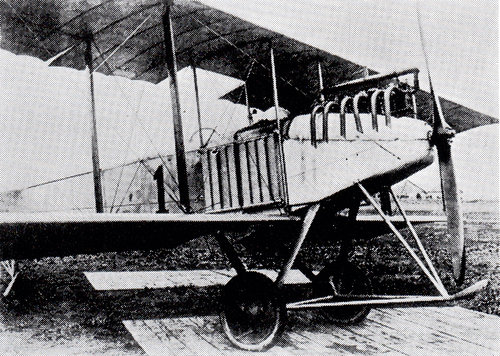 The Seishiki-1 Experimental Aeroplane initial shape.jpg1.6 MB · Views: 22
The Seishiki-1 Experimental Aeroplane initial shape.jpg1.6 MB · Views: 22 -
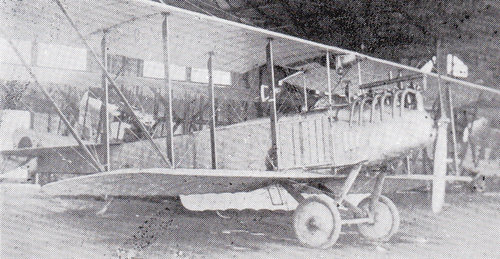 The Seishiki-1 Experimental Aeroplane (after modification).jpg1.3 MB · Views: 22
The Seishiki-1 Experimental Aeroplane (after modification).jpg1.3 MB · Views: 22 -
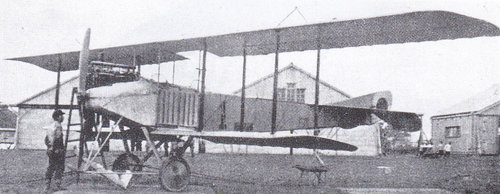 The Seishiki-1 Experimental Aeroplane (after Refurbishment).jpg839.3 KB · Views: 25
The Seishiki-1 Experimental Aeroplane (after Refurbishment).jpg839.3 KB · Views: 25 -
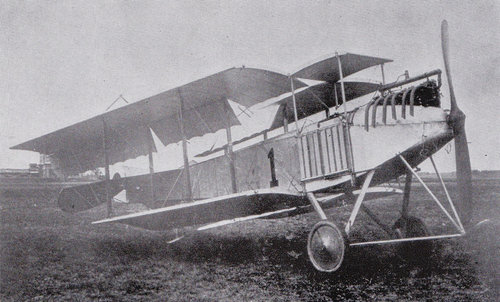 The Seishiki-1 Experimental Aeroplane with folded wing.jpg549 KB · Views: 26
The Seishiki-1 Experimental Aeroplane with folded wing.jpg549 KB · Views: 26 -
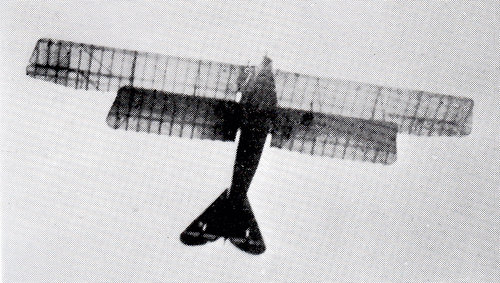 The Seishiki-1 Experimental Aeroplane flight picture.jpg1.2 MB · Views: 35
The Seishiki-1 Experimental Aeroplane flight picture.jpg1.2 MB · Views: 35
blackkite
Don't laugh, don't cry, don't even curse, but.....
- Joined
- 31 May 2007
- Messages
- 8,286
- Reaction score
- 5,852
Hi! The Seishiki-2 Experimental Aeroplane.
The Second formal airplane (The Seishiki 2-go Aeroplane) was a military aircraft prototyped by the Imperial Japanese Army. Although it is called "formal",
it means "planned as a formal machine" and had not actually been adopted.
In May 1917 (Taisho 6), the Provisional Military Balloon Research Association (PMBRA) began to develop a high-speed experimental tractor engine type aircraft
by Lieutenant Moriyoshi Sakamoto as the design chief and Shiro Yoshihara as an assistant, following the first formal aircraft(The Seishiki 1-go Aeroplane).
In December of the same year, one prototype was completed at the Tokorozawa factory of the PMBRA,
and on January 11, 1918 (Taisho 7), it flew for the first time under the control of Lieutenant Sakamoto.
However, in the second flight test conducted on the 17th of the same month, the aircraft stalled and crashed due to an engine malfunction,
and the aircraft was wrecked. Lieutenant Sakamoto, who was a pilot, also died.
This airplane was a biplane with a wooden frame (only the engine rack was made of metal) and was upholstered, and the design was based on the Albatross fighter.
Like the first formal aircraft, it featured radiators on both sides of the fuselage. The landing gear was a fixed leg. The all airframe was made by domestic material,
and the engine was also equipped with a domestically produced Daimler engine, but the performance continued to be unsuccessful, and the performance was not announced.
Following the crash of the Second formal airplane, the Army decided that it was too early to put domestic tractor engine aircraft into practical use, and after that,
Maurice Farman-type pusher type aircraft became the main force of the Army.
Length : 6. 70 m, Span : 9. 86 m, Height : 2. 60 m, Wing area : 31.0 m2
Engine : Tokyo Artillery Factory made Daimler type water-cooled in-line 6-cylinder( maximum 110 hp) x 1, Crew : 2
The oil cooler position was drastic.
The Second formal airplane (The Seishiki 2-go Aeroplane) was a military aircraft prototyped by the Imperial Japanese Army. Although it is called "formal",
it means "planned as a formal machine" and had not actually been adopted.
In May 1917 (Taisho 6), the Provisional Military Balloon Research Association (PMBRA) began to develop a high-speed experimental tractor engine type aircraft
by Lieutenant Moriyoshi Sakamoto as the design chief and Shiro Yoshihara as an assistant, following the first formal aircraft(The Seishiki 1-go Aeroplane).
In December of the same year, one prototype was completed at the Tokorozawa factory of the PMBRA,
and on January 11, 1918 (Taisho 7), it flew for the first time under the control of Lieutenant Sakamoto.
However, in the second flight test conducted on the 17th of the same month, the aircraft stalled and crashed due to an engine malfunction,
and the aircraft was wrecked. Lieutenant Sakamoto, who was a pilot, also died.
This airplane was a biplane with a wooden frame (only the engine rack was made of metal) and was upholstered, and the design was based on the Albatross fighter.
Like the first formal aircraft, it featured radiators on both sides of the fuselage. The landing gear was a fixed leg. The all airframe was made by domestic material,
and the engine was also equipped with a domestically produced Daimler engine, but the performance continued to be unsuccessful, and the performance was not announced.
Following the crash of the Second formal airplane, the Army decided that it was too early to put domestic tractor engine aircraft into practical use, and after that,
Maurice Farman-type pusher type aircraft became the main force of the Army.
Length : 6. 70 m, Span : 9. 86 m, Height : 2. 60 m, Wing area : 31.0 m2
Engine : Tokyo Artillery Factory made Daimler type water-cooled in-line 6-cylinder( maximum 110 hp) x 1, Crew : 2
The oil cooler position was drastic.
Attachments
Last edited:
blackkite
Don't laugh, don't cry, don't even curse, but.....
- Joined
- 31 May 2007
- Messages
- 8,286
- Reaction score
- 5,852
The Koshiki-2 Experimental Fighter is a fighter prototyped at the Tokorozawa Army Aviation School(所沢陸軍航空学校,Tokorozawa Rikugun Hiko Gakko)of the Japanese Army in the early 1920s. Two aircraft were built and first flew in 1922 (Taisho 11) and 1923 (Taisho 12), but development was discontinued due to maneuverability problems.
Attachments
blackkite
Don't laugh, don't cry, don't even curse, but.....
- Joined
- 31 May 2007
- Messages
- 8,286
- Reaction score
- 5,852
Hi!
Source : ENCYCLOPEDIA OF JAPANESE AIRCRAFT
Source : ENCYCLOPEDIA OF JAPANESE AIRCRAFT
Attachments
blackkite
Don't laugh, don't cry, don't even curse, but.....
- Joined
- 31 May 2007
- Messages
- 8,286
- Reaction score
- 5,852
Hi! The A-3 Experimental Long-distance Reconnaissance-plane.
Source : ENCYCLOPEDIA OF JAPANESE AIRCRAFT
Source : ENCYCLOPEDIA OF JAPANESE AIRCRAFT
Attachments
-
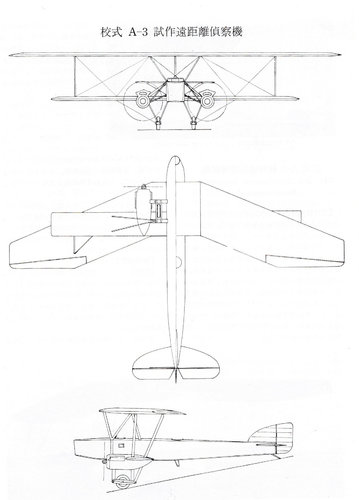 The A-3 Experimental Long-distance Reconnaissance plane three side view drawing.jpg227.3 KB · Views: 47
The A-3 Experimental Long-distance Reconnaissance plane three side view drawing.jpg227.3 KB · Views: 47 -
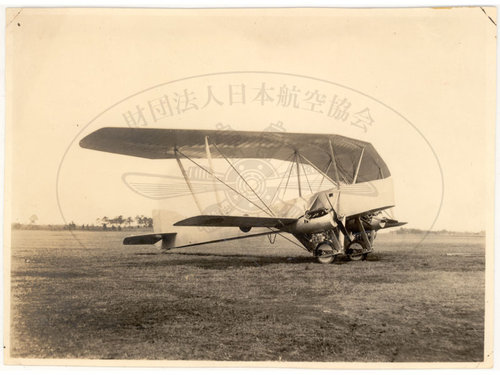 The A-3 Experimental long distance reconnaissance plane pic1.jpg97.9 KB · Views: 40
The A-3 Experimental long distance reconnaissance plane pic1.jpg97.9 KB · Views: 40 -
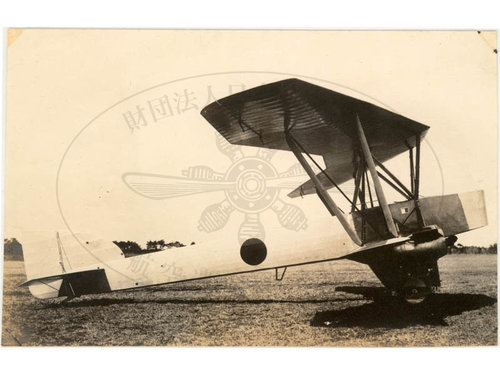 The A-3 pic2.jpg90.5 KB · Views: 28
The A-3 pic2.jpg90.5 KB · Views: 28 -
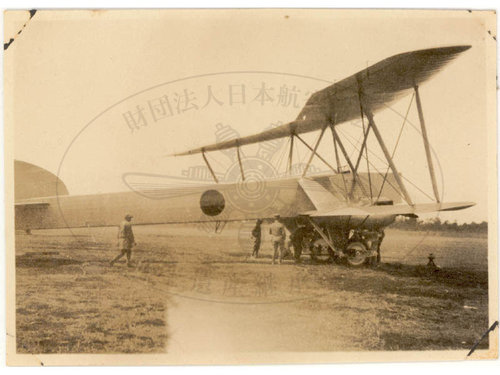 pic3.jpg86.7 KB · Views: 25
pic3.jpg86.7 KB · Views: 25 -
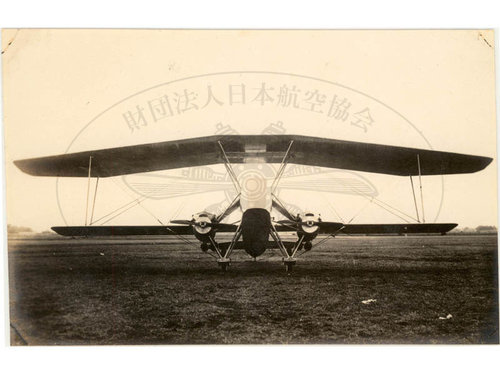 pic4.jpg85.6 KB · Views: 27
pic4.jpg85.6 KB · Views: 27 -
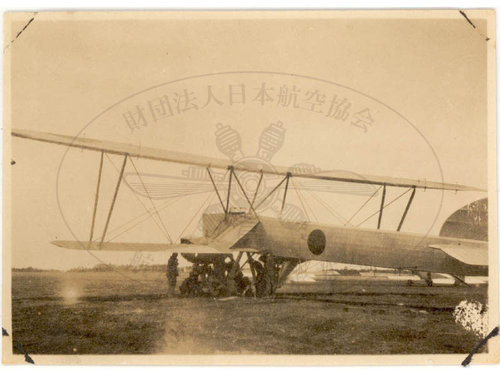 pic5.jpg83.8 KB · Views: 24
pic5.jpg83.8 KB · Views: 24 -
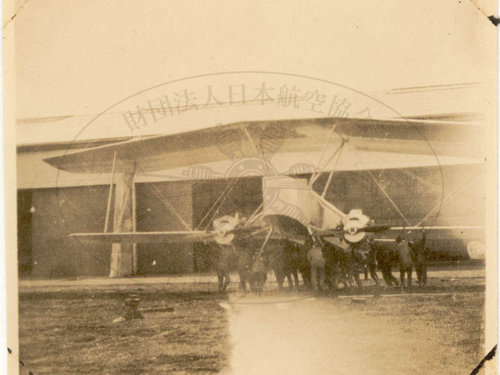 pic6.jpg82.8 KB · Views: 22
pic6.jpg82.8 KB · Views: 22 -
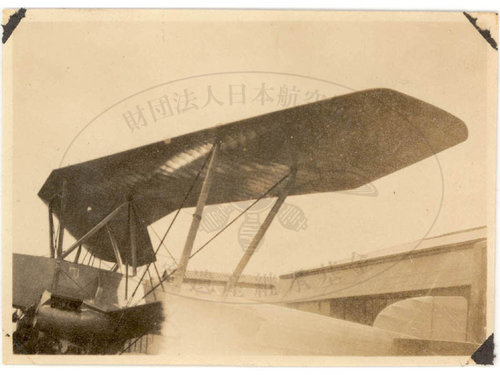 pic7.jpg81.4 KB · Views: 22
pic7.jpg81.4 KB · Views: 22 -
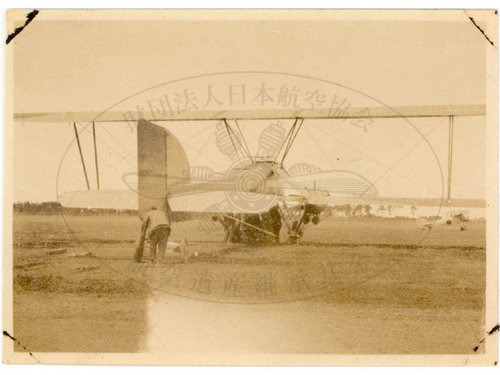 pic8.jpg78 KB · Views: 21
pic8.jpg78 KB · Views: 21 -
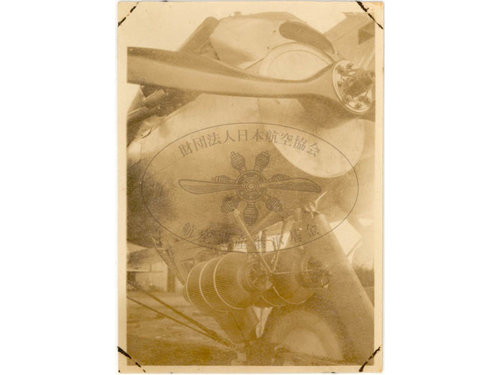 pic9.jpg46.9 KB · Views: 21
pic9.jpg46.9 KB · Views: 21 -
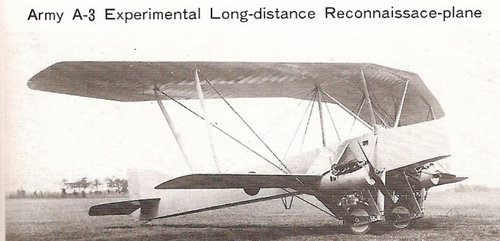 A-3.JPG179.1 KB · Views: 34
A-3.JPG179.1 KB · Views: 34
blackkite
Don't laugh, don't cry, don't even curse, but.....
- Joined
- 31 May 2007
- Messages
- 8,286
- Reaction score
- 5,852
The A-3 Experimental Long-distance Reconnaissance-plane was a long-range reconnaissance aircraft prototyped by the Imperial Japanese Army.
The aircraft name "A" means French style, and "3" means three seater. It is also called "Ko-shiki A-3" because the Tokorozawa Army Aviation School Research Department (Tokorozawa Rikugun Koku Gakko Kenkyu-bu) led the development.
In 1922 (Taisho 11), the Tokorozawa Army Aviation School Research Department planned a prototype of an epoch-making long-range reconnaissance aircraft, and started designing it in April of the same year. The design was led by six engineers, including Antoine de Boisin, who came to Japan from France, and was carried out in cooperation with Japanese engineers such as Major Matsui. The production work was significantly delayed due to the effects of the Great Kanto Earthquake, etc., and one prototype was completed in February 1924 (Taisho 13). After that, flight tests were conducted by the research team's flight team in Tokorozawa and Kakamigahara, but problems such as overweight and insufficient horsepower were discovered in addition to problems such as damage to the main landing gear wheel shock absorbers, and performance was less than expected, so it was not put into practical use. However, the A-3 concept itself had been passed down to later Head Quarter reconnaissance aircraft.
This aircraft was a twin-engine biplane with one and a half wing, with a duralumin frame that was advanced at the time, and the upper wing with a built-in fuel tank was a swept wing.
One of the problems with this aircraft was that it vibrated violently due to a defect in the structure of the engine rack.
In addition, since there was no spare for the broken wheel, the smaller type Otsu-1 reconnaissance aircraft wheels were replaced with a twin-wheel type.
In addition, the engine was planned to be experimentally equipped with a Ratu-type turbo compressor, but this was not realized and was taken over by the later experimental type 3 fighter.
Length : 16. 00 m, Span : 21. 00 m, Height : 5. 275 m, Wing area: 85.0 m2
Empty weight : 2,000 kg, Gross weight : 3,000 kg
Engine: Mitsubishi Hispano-Suiza water-cooled V8 (Take off power 320 hp) x 2
Maximum speed: 200 km / h (planned speed when equipped with turbo compressor: 245 km / h)
Ceiling: 7,500 m (planned ceiling when equipped with turbo compressor: 9,500 m)
Endurance : 5 hours, None armament
The aircraft name "A" means French style, and "3" means three seater. It is also called "Ko-shiki A-3" because the Tokorozawa Army Aviation School Research Department (Tokorozawa Rikugun Koku Gakko Kenkyu-bu) led the development.
In 1922 (Taisho 11), the Tokorozawa Army Aviation School Research Department planned a prototype of an epoch-making long-range reconnaissance aircraft, and started designing it in April of the same year. The design was led by six engineers, including Antoine de Boisin, who came to Japan from France, and was carried out in cooperation with Japanese engineers such as Major Matsui. The production work was significantly delayed due to the effects of the Great Kanto Earthquake, etc., and one prototype was completed in February 1924 (Taisho 13). After that, flight tests were conducted by the research team's flight team in Tokorozawa and Kakamigahara, but problems such as overweight and insufficient horsepower were discovered in addition to problems such as damage to the main landing gear wheel shock absorbers, and performance was less than expected, so it was not put into practical use. However, the A-3 concept itself had been passed down to later Head Quarter reconnaissance aircraft.
This aircraft was a twin-engine biplane with one and a half wing, with a duralumin frame that was advanced at the time, and the upper wing with a built-in fuel tank was a swept wing.
One of the problems with this aircraft was that it vibrated violently due to a defect in the structure of the engine rack.
In addition, since there was no spare for the broken wheel, the smaller type Otsu-1 reconnaissance aircraft wheels were replaced with a twin-wheel type.
In addition, the engine was planned to be experimentally equipped with a Ratu-type turbo compressor, but this was not realized and was taken over by the later experimental type 3 fighter.
Length : 16. 00 m, Span : 21. 00 m, Height : 5. 275 m, Wing area: 85.0 m2
Empty weight : 2,000 kg, Gross weight : 3,000 kg
Engine: Mitsubishi Hispano-Suiza water-cooled V8 (Take off power 320 hp) x 2
Maximum speed: 200 km / h (planned speed when equipped with turbo compressor: 245 km / h)
Ceiling: 7,500 m (planned ceiling when equipped with turbo compressor: 9,500 m)
Endurance : 5 hours, None armament
Last edited:
blackkite
Don't laugh, don't cry, don't even curse, but.....
- Joined
- 31 May 2007
- Messages
- 8,286
- Reaction score
- 5,852
In 1920, the Tokorozawa Army Aviation School Research Department was planning the Koshiki Experimental Bomber in parallel with the plan for the Koshiki-2 Experimental Fighter. It was a biplane that incorporated features such as Morane-Saulnier, Caudron, and Voisin of France, and had a three-wheel landing gear. The engine was a Hispano-Suiza 300 hp, with machine gun mounts at front and behind the cockpit, which had the characteristics of a standard twin-engine bomber of the time. The plane was not built and no data was released.
The estimated values are as follows.
Span : 18m, Length : 11m, Gross weight : 3000kg, Maximum speed : 180km / h
Source :
ENCYCLOPEDIA OF JAPANESE AIRCRAFT
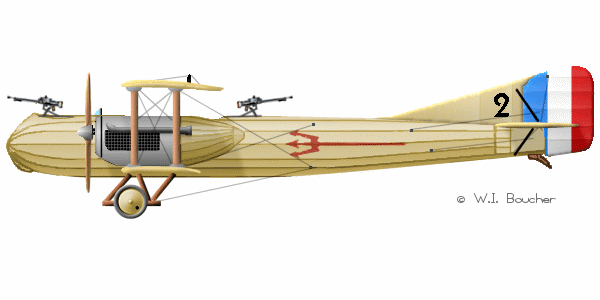
 alchetron.com
alchetron.com
The estimated values are as follows.
Span : 18m, Length : 11m, Gross weight : 3000kg, Maximum speed : 180km / h
Source :
ENCYCLOPEDIA OF JAPANESE AIRCRAFT

Caudron R.11 - Alchetron, The Free Social Encyclopedia
The Caudron R.11, (misidentified in Jane's 1919 as the Caudron R.II), was a French fiveseat twinengine bomber, reconnaissance and escort biplane developed and produced by Caudron during the First World War. The R.11 was originally intended to fulfill the French Corps d'Armee reconnaissance catego
Attachments
-
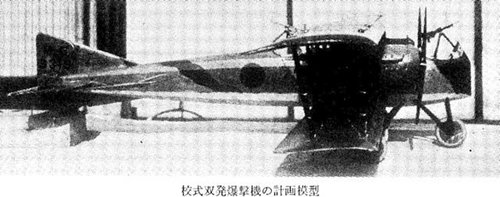 Model of the planned Koshiki Experimental Bomber.jpg154 KB · Views: 39
Model of the planned Koshiki Experimental Bomber.jpg154 KB · Views: 39 -
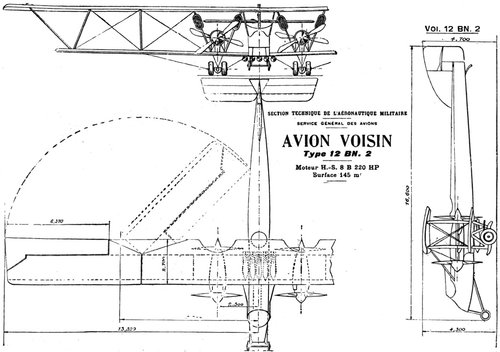 Voisin_12Bn_2_dwg.jpg131.1 KB · Views: 38
Voisin_12Bn_2_dwg.jpg131.1 KB · Views: 38 -
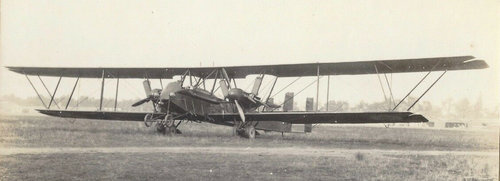 Voisin_XII_4-engine_bomber.jpg168 KB · Views: 37
Voisin_XII_4-engine_bomber.jpg168 KB · Views: 37 -
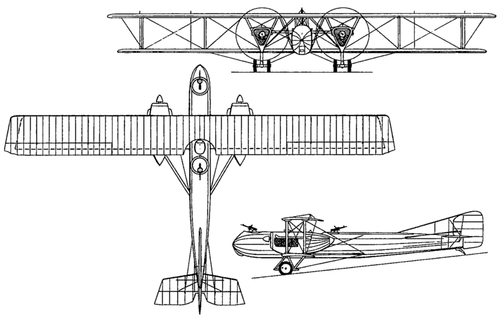 caudron-r11-3f8cbb0c-a7c1-43f8-af99-c563fbf0f35-resize-750.gif74.7 KB · Views: 32
caudron-r11-3f8cbb0c-a7c1-43f8-af99-c563fbf0f35-resize-750.gif74.7 KB · Views: 32 -
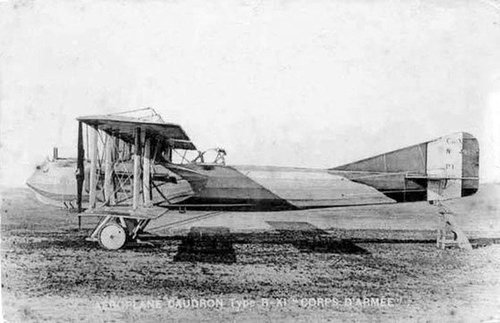 caudron-r11-f17a927d-ab1b-46f3-8912-0170df26c40-resize-750.jpg52.7 KB · Views: 29
caudron-r11-f17a927d-ab1b-46f3-8912-0170df26c40-resize-750.jpg52.7 KB · Views: 29 -
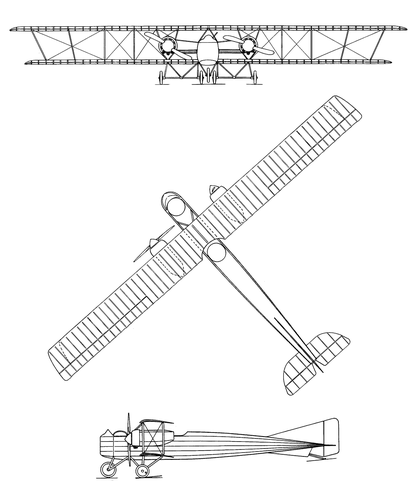 Morane-Saulnier T picture.gif140.4 KB · Views: 36
Morane-Saulnier T picture.gif140.4 KB · Views: 36 -
 Morane-Saulnier T picture.jpg58.1 KB · Views: 50
Morane-Saulnier T picture.jpg58.1 KB · Views: 50
Last edited:
Similar threads
-
Kokusai Ki-76 artillery spotter/liaison aircraft: a Japanese "Storch"
- Started by blackkite
- Replies: 6
-
Kawanishi H3K ("Belle") Long-range Recce Flying Boat
- Started by blackkite
- Replies: 2
-
Yokosuka (Yokosho/Yosho, Kugisho/Kusho) related topics on this forum
- Started by Stargazer
- Replies: 0
-
IJA engineer Naruo Ando's original designs (blueprints)
- Started by blackkite
- Replies: 28
-

